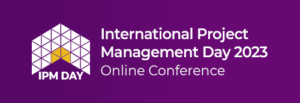By Brandon Fargis
November 8, 2023
Every fall, a drive through the Blue Ridge Parkway is a tradition that never fails to ground me. The sight of leaves turning to a tapestry of red and gold is a yearly ritual that brings perspective and a sense of renewal — a necessary pause for any leader amidst the bustle of business life. As a lifelong North Carolinian, I find that embracing our state’s seasonal shift is a powerful reminder of change’s constant and steadfast rhythm. It’s a time of quiet reflection that often yields profound insights.
Amid this peaceful backdrop, I found myself reading news about a marathon taking place—a marathon that, years ago, I had tackled as my first. The memories of training came flooding back: the early mornings, long roads, discipline, and above all, the invaluable rest days. These were the moments that allowed sore muscles to recover and my determination to be renewed.
This rhythm of exertion and recovery resonates deeply with the cadence of leadership in business. As we navigate through the final quarter, driving our teams towards end-of-year goals, we are reminded that endurance is not perpetual motion but rhythmic pacing. Just as the runner needs to rest to prevent injuries, we, as leaders, need to champion moments of respite to sustain our teams and ourselves.
The serenity of the mountains and the discipline of the marathon runner remind us of a vital lesson: success in leadership, much like in life, demands the courage to forge ahead, tempered with the prudence to acknowledge our limits, particularly in the face of the world’s ongoing challenges.
As the year winds down, let’s take a moment to reflect on our approach to leadership. It’s essential to prioritize—identify the key initiatives that will require our focus as the year closes. Allocating our resources wisely can help stave off the frenetic pace that often accompanies year-end deadlines, ensuring that the quality of our work doesn’t falter under the pressure of the holiday season’s crunch.
Equally important is delegation; trusting our team with meaningful responsibilities not only empowers them but also disperses the workload evenly, safeguarding against the all-too-common threat of burnout. And let’s not forget the power of celebrating the small wins along the way. Acknowledging these achievements, as Judy Umlas explores in her book ‘The Power of Acknowledgment,’ can significantly boost morale and keep the team’s energy buoyant as we head into the new year.
For those seeking further insight into creating a sustainable rhythm of success, I recommend “Rest” by Alex Soojung-Kim Pang. This book delves into the science and importance of rest in our lives and offers practical steps to integrate it into our daily routines.
As we guide our teams through the remainder of the year, let’s remember that the strongest leaders are those who recognize the power of a pause. Let’s commit to leading by example, showing that success is not just about the rush to the finish line, but also about ensuring the well-being of our teams. By doing so, we not only finish the year strong but also start the new one on solid ground, with a team that’s ready and rejuvenated for the challenges ahead.
Brandon Fargis is a software executive and neurodiversity thought leader with extensive experience in top software and technology companies. He holds degrees in Psychology, Computer Science, and Business, and has a strong passion for diversity and inclusion, particularly neurodiversity.
Using his unique perspective on technology and people, Brandon helps organizations achieve their goals and improve employee satisfaction. As a passionate advocate for neurodiversity, he has developed a deep understanding of how to create a culture of inclusivity and diversity in the workplace.
International Project Management Day Online Conference is available to stream now through February 5th, 2024. Sign up here!
Disclaimer: The ideas, views, and opinions expressed in this article are those of the author and do not necessarily reflect the views of International Institute for Learning or any entities they represent.



